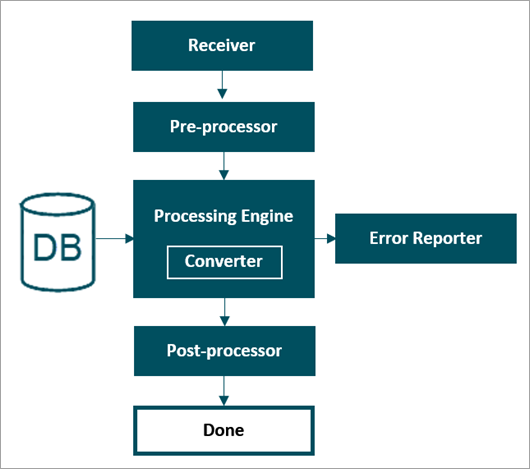The IIEP functionality has been created to allow for easy extensions and customizations, and is a plugin framework with interchangeable parts. The graphic below illustrates the structure and the colored boxes represent the interchangeable parts, which are described below.

Receiver
The receiver is responsible for retrieving files or messages and passing them on to the succeeding plugins. The available receiver options are described in the 'Receiver Methods' section of the IIEP - Choose Receiver topic.
Pre-processor
A pre-processor (for example, an XML normalizer) has access to the file or message delivered by the receiver and can manipulate or discard it. STEP does not include any predefined pre-processors. For more information, refer to the IIEP - Configure Pre-processor topic.
Processing Engine / Converter
The processing engine is responsible for performing the actual data import. The STEP Importer and Asset Importer engines are available with core functionality. If a format not supported in the standard STEP Importer is required, the processing engine can be replaced via an extension. Most often, however, creating a converter for the STEP Importer is sufficient for such cases. This approach also has the benefit that the same converter is available for manual imports. For more information, refer to the IIEP - Configure Processing Engine topic.
Error Reporter
The Send Error Report option sends an alert email to specified addresses if errors or warnings occur when files or messages are handled by the processing engine. For more information, refer to the IIEP - Error Handling & Reporting topic.
Post-processor
A customized post-processor has access to import events (information about what has changed) and, based on the events, can trigger any required system change. For more information on events, refer to the Events topic in the System Setup documentation.
By default, STEP does not include any pre-configured post-processor, since post-processor logic is also typically implemented via business rules referenced from the processing engine configuration.